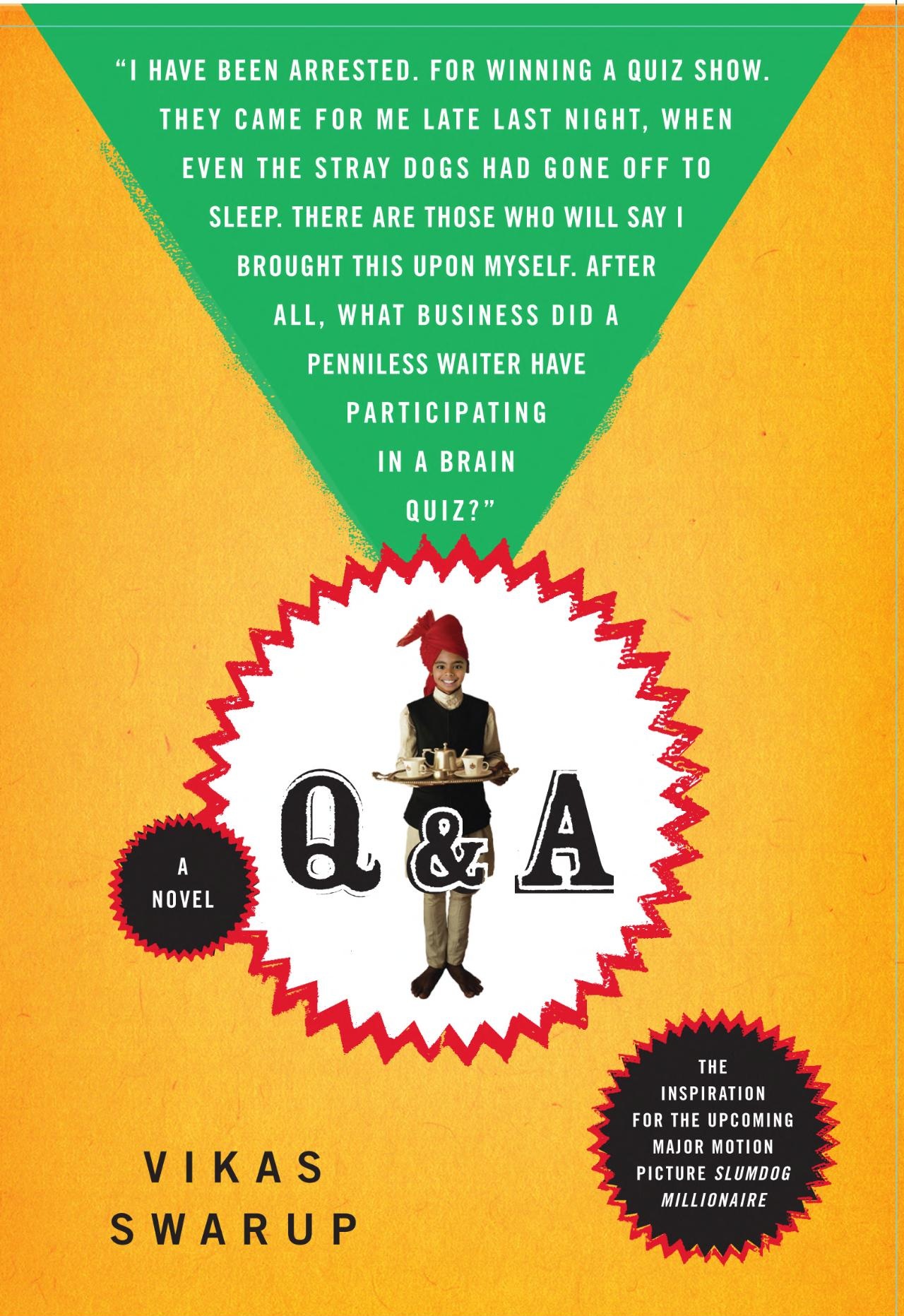
By Swarup Vikas
Availability
upcoming
Original Title
Q & A
Subject & College
Series
Publish Date
2005-01-01
Published Year
2005
Publisher, Place
Total Pages
363
ISBN
9780552772501
Format
Paperback
Country
India
Language
English
Readers Feedback
Q&A’s Powerful Exposé of India’s Social Ills
Arya Laxmikant Kadam, Student TY BBA (CA) MES Senior College, Pune. Imagine a world where fate is shaped by the whims of chance, where survival...Read More
Arya Laxmikant Kadam
Q&A’s Powerful Exposé of India’s Social Ills
Arya Laxmikant Kadam, Student TY BBA (CA) MES Senior College, Pune.
Imagine a world where fate is shaped by the whims of chance, where survival is a daily struggle, and where hope is a luxury few can afford. Welcome to the India of Vikas Swarup’s “Q&A,” a place of extreme contrasts where the wealthy’s luxury and the streets’ filth share a home. It’s a relentless grind, a real-life rat race, where only the strongest endure. Yet, amidst the chaos, we encounter Ram Mohammad Thomas, a young orphan poised to disrupt the status quo and capture your heart.
Vikas Swarup’s “Q&A” is a seminal work of contemporary literature that offers a nuanced exploration of the human condition. At its core, the novel tells the story of Ram Mohammad Thomas, a young orphan who wins the Indian version of the quiz show “Who wants to be a Millionaire?” and is promptly arrested because a poor street kid can’t know the answers to all the questions unless he was cheating, right? Ram maintains that he simply knew the answers and that to understand how one must know his entire life. This is no ordinary rags-to-riches tale; rather, it is a thought-provoking examination of the intersections between poverty, corruption, and social inequality.
The novel, situated in India, features a protagonist named Ram Mohammed Thomas, whose name represents the three major religions of India – Hinduism, Islam, and Christianity, thereby positioning him as an Everyman figure. Ram lives his nomadic life literally by the toss of a coin, as emphasized by the chaotic structure. Through Ram’s experiences, Swarup illuminates the harsh realities of life in India’s marginalized communities, where individuals must hustle and rely on their wits to survive. The novel is filled with moments of tender beauty, stark brutality, and quiet courage, which collectively highlight the resilience of the human spirit.
One of the novel’s greatest strengths lies in its innovative structure, mirroring the format of the quiz show. Each chapter corresponds to a question on the show, and as Ram answers each one, he recalls a significant event from his past that helped him gain the knowledge. This clever device allows Swarup to move back and forth in time, weaving together disparate threads of Ram’s life into a rich and cohesive narrative.
The author creates vivid portrayals of India’s busy streets, marketplaces, and landscapes via her descriptive and approachable language. His characters are multidimensional and relatable, from Ram’s loyal friend Salim to the enigmatic Nita, the object of Ram’s enduring love. He has a personal reason for wanting to win the grand prize, which involves a girl he fell in love with and lost touch with. The girl, Nita, had been sent to work as a prostitute in a brothel, and Ram has been searching for her ever since. Through these characters, Swarup reveals the complexities of Indian society, exposing the deep-seated contradictions and paradoxes that define this vast and diverse nation. You’ll encounter a parade of characters, including gay priests, crippled beggars, Bollywood actors and actresses, gangsters, perverts, prostitutes, police, and even an Australian Defence attaché, as you meet the city’s most fascinating faces.
What distinguishes “Q&A” from other novels is its refusal to sentimentalize or romanticize the lives of its characters. The Novel is so visual, vivid and teeming with life like a New Delhi bazaar, that it is no wonder it was chosen to be made into a film; you get a fantastic sense of place. Swarup pulls no punches in portraying the harsh realities of poverty, abuse, and exploitation, yet he balances these moments with a profound sense of empathy and compassion. The result is a narrative that is both unflinching and humane, a true testament to the power of storytelling in capturing the essence of the human experience. The novel is, at times, grim and cruel, after all, the life of a penniless orphan is a tough one and the novel pulls no punches in this respect.
In conclusion, “Q&A” is a masterpiece of contemporary literature that will leave readers breathless, disturbed, and ultimately inspired. Swarup’s writing exemplifies the transformative power of storytelling, and his characters will linger in readers’ memories long after they finish the book. If you haven’t already, do yourself a favor and immerse yourself in the world of “Q&A.” It’s a journey you won’t soon forget, one that will leave you feeling completely mind-blown.
